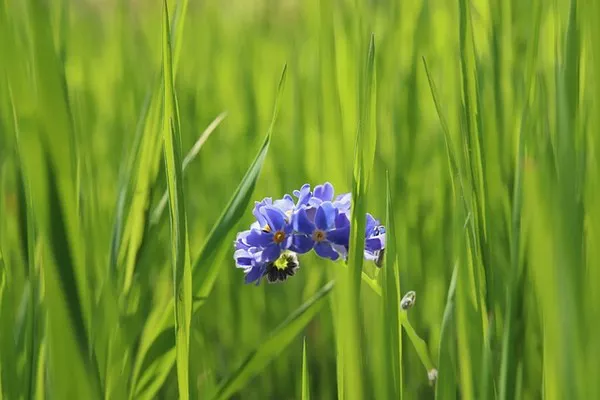Flowers, with their enchanting colors and delicate fragrances, are nature’s exquisite gifts to humanity. These botanical wonders captivate our senses, symbolizing love, celebration, and empathy. However, one fundamental aspect of preserving their allure is often overlooked: their dependency on water. Many of us have witnessed the wilting and fading of flowers when left without a water source for an extended period. In this article, we delve into the science behind how long flowers can last without water and explore the factors that influence their longevity.
The Physiology of Flowers
To understand how long flowers can survive without water, it’s essential to comprehend the physiological processes taking place within these botanical marvels. Flowers, much like other plant parts, require water for several vital functions:
Transpiration: This is the process through which flowers lose water through tiny pores on their surfaces, known as stomata. Transpiration is essential for nutrient uptake and overall plant health.
Nutrient Transport: Water carries nutrients from the roots to all parts of the flower, including petals, leaves, and stems. These nutrients are essential for the flower’s growth and maintenance.
Turgor Pressure: Water maintains the turgor pressure within plant cells, which keeps the cells firm and erect. This turgidity provides the flower with its characteristic appearance.
Temperature Regulation: Water also helps regulate the temperature of the flower, preventing overheating in direct sunlight.
Given these vital roles of water in a flower’s life, it is clear that withholding water can significantly affect its lifespan. The specific duration a flower can survive without water depends on various factors.
Flower Type
Different types of flowers have varying tolerances to water deprivation. Some are naturally hardier and can withstand longer periods without water, while others are more delicate. Succulents, for example, are adapted to arid conditions and can endure water scarcity far better than most other flowers.
Cut Flowers vs. Potted Plants
Cut flowers are typically more sensitive to water deprivation than potted plants. Cut flowers have been severed from their nutrient source, making them more reliant on the water provided to them. Potted plants still have access to the soil for water and nutrients, which can prolong their survival.
Environmental Conditions
Environmental factors, such as temperature and humidity, play a critical role in how long a flower can last without water. In hot, dry conditions, flowers will dehydrate more rapidly. Conversely, in a cool, humid environment, their survival time may be extended.
How Long Can Flowers Last Without Water?
The duration a flower can last without water varies widely depending on the factors mentioned earlier. Here’s a general guideline for several common types of flowers and their water resilience:
Roses: Roses are known for their beauty and elegance. Without water, cut roses can last for about 4-7 days. However, their longevity can be extended if kept in a cool environment and the stems are recut periodically to maintain water uptake.
Carnations: Carnations are relatively hardy flowers. Without water, they can persist for 7-10 days or even longer in optimal conditions.
Daisies: Daisies are typically able to survive for 5-7 days without water.
Tulips: Tulips can last for 5-7 days without water, though they are sensitive to heat. Placing them in a cool environment can help prolong their lifespan.
Lilies: Lilies are somewhat more robust, with a potential to endure without water for 7-10 days.
Sunflowers: These bright, cheerful blooms can last 7-10 days without water, thanks to their sturdy stems and robust petals.
Succulents: Succulents, including the popular varieties like Aloe and Echeveria, are incredibly resilient and can go without water for weeks, if not months, due to their water-storing adaptations.
Orchids: Orchids have a reputation for lasting a long time without water. Some varieties can survive without water for several weeks, making them excellent houseplants for busy individuals.
Factors Affecting Longevity
While these guidelines provide a rough estimate, several factors can influence the actual longevity of flowers without water:
Condition at the Time of Cutting: The health and hydration of the flower at the time of cutting play a significant role. A well-hydrated flower will naturally last longer without water.
Cutting and Trimming: Properly cutting the flower stems and regularly trimming them can help extend their survival. A clean cut at an angle increases the surface area for water absorption.
Water Temperature: Using lukewarm water can help open up the flower’s cells and improve water uptake.
Preservatives: Commercial flower preservatives can prolong the life of cut flowers by providing nutrients and inhibiting bacterial growth in the vase water.
Light and Heat Exposure: Flowers exposed to direct sunlight and high temperatures will wilt more quickly. Keeping them in a cool, shaded area can extend their lifespan.
Conclusion
Flowers, those fleeting symbols of beauty and emotion, are not exempt from the fundamental laws of nature. They require water to maintain their vitality and allure. The duration a flower can last without water varies depending on factors such as flower type, environmental conditions, and care practices.
Understanding these factors can help us appreciate and care for our floral arrangements more effectively, ensuring that their elegance endures. Whether it’s a bouquet of roses, a vase of lilies, or a potted succulent, each flower type has its unique water resilience. By providing the appropriate care and environment, we can extend their lifespans and continue to enjoy their splendor for days, and sometimes even weeks, to come.


